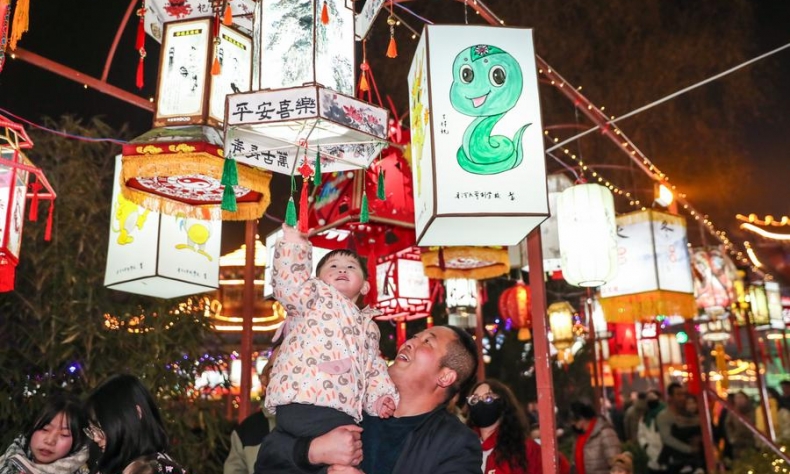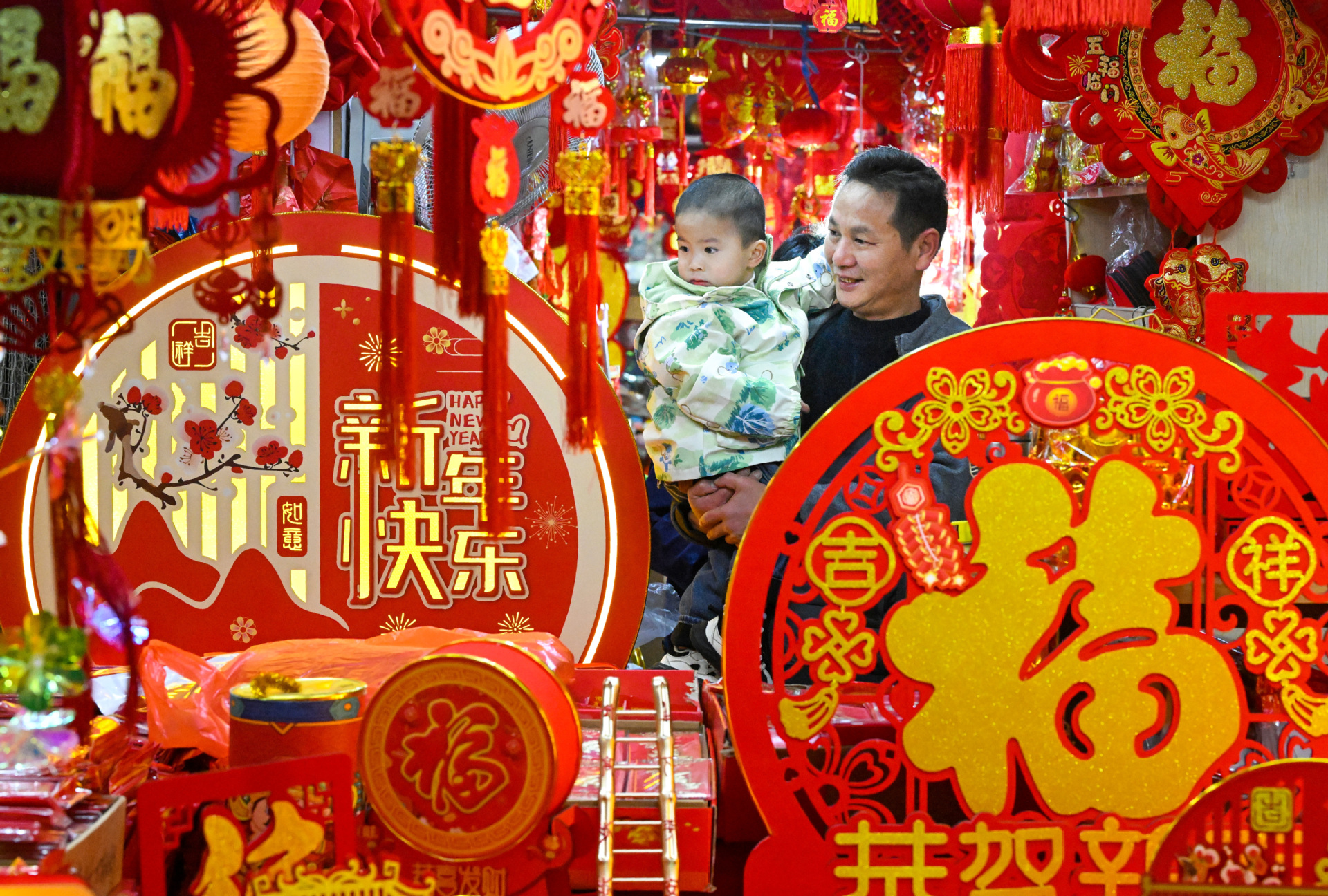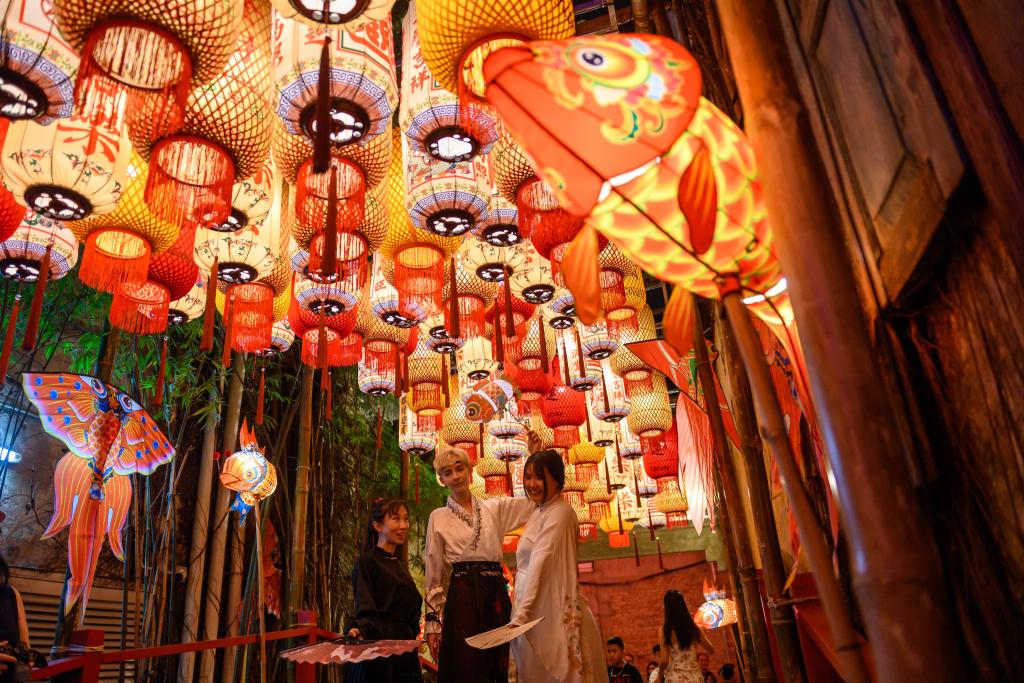A Time to Rejoice

Inscription onto the UNESCO’s intangible cultural heritage list shows the growing popularity and recognition of Chinese Spring Festival.
The Spring Festival is the most cherished occasion in China when people gather with their families to celebrate the traditional New Year. A “special gift” this year has given them an additional reason to celebrate.
On 4 December 2024, the Spring Festival was inscribed onto the Representative List of the Intangible Cultural Heritage of Humanity by UNESCO.
The decision was made during the 19th session of the Intergovernmental Committee for the Safeguarding of the Intangible Cultural Heritage, held in Paraguay from 2 to 7 December 2024. The committee recognised the festival for its wide array of rituals and unique cultural elements that engage all of Chinese society.
Tradition goes global
The Spring Festival is the most important traditional festival in China. It is a time when members of a family get together to welcome the Chinese New Year. The festival celebrates the human values of peace, harmony, social inclusion, and a sound relationship between humans and nature.
For a long time, China has made constant efforts to promote these values worldwide. The Spring Festival was included onto the first batch of the National List of Representative Elements of Intangible Cultural Heritage on 20 May 2006. In 2023, China’s Ministry of Culture and Tourism initiated the campaign to apply for UNESCO’s recognition of the Spring Festival. In December of the same year, the 78th United Nations General Assembly unanimously passed a resolution, officially designating the Spring Festival, also known as Lunar New Year, as a UN floating holiday.
The recognition by UNESCO in December 2024 underscores China’s commitment to strengthening the protection, preservation, and utilisation of cultural and natural heritage. This recognition is significant for China and adds new lustre to world civilisations.
The celebration of the Spring Festival includes a wide array of activities, such as pasting Spring Festival couplets on walls and doors, hanging New Year paintings, eating steamed buns with colourful patterns, and visiting temple fairs.
According to UNESCO’s documentation, the traditional knowledge and customs associated with the Spring Festival are passed down informally within families and communities, as well as formally through the education system. Craftsmanship and artistic skills related to the festival are transmitted through apprenticeships, promoting family values, social cohesion, and peace, while providing a sense of cultural identity.

Common values
China’s Vice Minister of Culture and Tourism Rao Quan, who led the Chinese delegation to the UNESCO session, said the inclusion of the Spring Festival onto the UNESCO list will help to promote the universal values of peace and harmony and highlight the important role of intangible cultural heritage in sustainable development.
The reason why the Lunar New Year can transcend national borders and become increasingly popular in other countries lies primarily in the profound cultural heritage of China and the driving force of globalisation, according to Shan Jixiang, former curator of the Palace Museum. As the world’s second-largest economy, China’s cultural elements have diffused alongside its economic influence. In the trend of globalisation, people’s interest in diverse cultures is gradually increasing, and the Lunar New Year has become a crucial means for people to connect and communicate, Shan told the Global Times.
Liu Kuili, honorary member of the Academic Division of the Chinese Academy of Social Sciences and honorary president of the Chinese Folklore Society, pointed out that the Spring Festival is one of the symbols of Chinese civilisation, the most distinctive cultural activity of the Chinese people, and a hallmark of cultural, national and state identity for the Chinese. The inscription represents a practical step in China’s commitment to implementing the Global Civilisation Initiative and promoting exchanges and mutual learning among civilisations, and shows the festival is gaining traction across the world.
For Luis Antonio Paulino, director of the Confucius Institute at São Paulo State University in Brazil, the inclusion of the Spring Festival onto the UNESCO list is about “preserving the history of humanity itself.” Dating back thousands of years, the festival continues to connect people across the globe.
As the oldest and most important traditional holiday in Chinese culture, the Spring Festival is spreading across the world. According to Chinese Foreign Ministry Spokesperson Lin Jian, the Spring Festival is an official holiday in many countries and regions, and about one-fifth of the world’s population celebrates the Lunar New Year in different ways.
Moreover, Spring Festival activities and other cultural events hosted by China to celebrate the festival take place almost everywhere in the world. UN Secretary General has extended Spring Festival greetings on many occasions, and dignitaries of many countries have joined Spring Festival celebrations.
“We very much hope that the festival’s cultural message will contribute to a world of fewer conflicts, harmony among civilisations, and amity among peoples of the world. We hope the Spring Festival will be a moment of joyfulness shared by all,” Lin said on the inscription of Spring Festival onto the UNESCO intangible cultural heritage list.
A model for preservation
Congratulating China on the successful inscription, Nancy Ovelar de Gorostiaga, Paraguay’s permanent representative to UNESCO and chair of the meeting, said that China is the example that many countries should follow in order to safeguard their heritage, culture and traditions. “Each element, each heritage, is important,” de Gorostiaga said. “And Chinese culture, of course, is an ancient and beautiful culture that transmits many values to us,” she said.

Sonia Virgen Pérez, president of the Cuban National Heritage Council, believed that the successful inscription reflects China’s active commitment to protecting traditional culture.
This year marks the 20th anniversary of China joining UNESCO’s Convention for the Safeguarding of Intangible Cultural Heritage. Over the past two decades, China has made remarkable achievements in preserving and promoting the development of intangible cultural heritage (ICH).
To date, China has over 100,000 ICH items of various kinds, including 1,557 featured on the national list. A total of 3,056 people are recognised as national-level ICH inheritors. The Chinese government has also conducted training programmes for the inheritors, benefitting over 40,000 people during the past 10 years.
With the latest inscription, the number of intangible cultural heritage items in China on the UNESCO list has reached 44, the most of its kind worldwide.
On 5 December 2024, the session also approved the transfer of three Chinese cultural heritage projects from the List of Intangible Cultural Heritage in Need of Urgent Safeguarding to the Representative List of the Intangible Cultural Heritage of Humanity. These are the Traditional Li Textile Techniques of Spinning, Dyeing, Weaving and Embroidering, the Qiang New Year, and the Traditional Chinese Wooden Arch Bridges Construction Techniques.
These heritage projects have seen remarkable progress in preservation and sustainability. Traditional Li textile-making and embroidery, still done by women of Li ethnicity in Hainan Province, have spurred local economic development by creating employment opportunities for women through cooperatives and enterprises.
The Qiang New Year, a festival celebrated by the Qiang ethnic group, has contributed to the protection of traditional Qiang culture while boosting cultural tourism.
The traditional Chinese wooden arch bridge construction techniques, prevalent in parts of Fujian and Zhejiang provinces, represent a harmonious integration of intangible cultural heritage with natural and cultural ecosystems.
According to Rao, the country will take the successful inclusion of the Spring Festival onto the UNESCO list as a new starting point to better protect and carry forward the cultural values and essence inherent in the Spring Festival. In this way, the traditional intangible cultural heritage will stay alive and be embedded in modern life.
 Facebook
Facebook
 Twitter
Twitter
 Linkedin
Linkedin
 Google +
Google +










